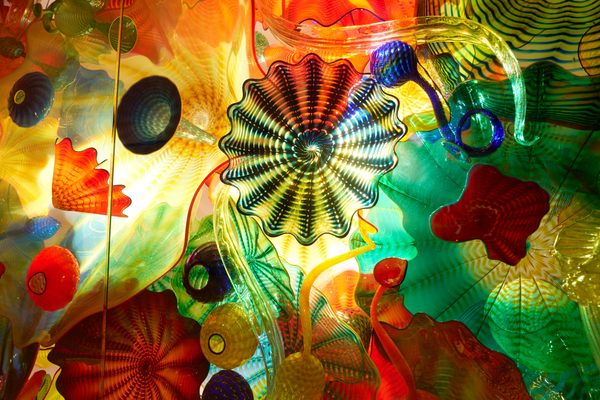An Abandoned Roman Salami Factory Becomes an Illegal, Inhabited Museum
About 200 people live in the improvised art space.

Passionate about traveling and experiencing new cultures, 42-year-old Mustapha from Morocco was hoping for an exciting life when he first arrived in Italy 20 years ago. But not even in his wildest dreams did he expect to be living in an illegal museum.
Mustapha is one of 200 inhabitants of a former salami factory on the outskirts of Rome, which has become an important art space in the Italian capital.
In 2009, an assortment of Italians and migrants from Morocco, Sudan, Eritrea, Peru, and Ukraine, as well as several local Roma families, entered the abandoned meat factory complex in the Tor Sapienza suburb in the eastern part of Rome. The occupiers, most of whom were homeless, and most of whom were unknown to each other before moving into the factory, cleaned the area and turned the auxiliary facilities into homes.

Two years later, Italian artist Giorgio De Finis came across the place, which exuded a cosmopolitan spirit where people from around the world lived together. In collaboration with its residents, De Finis developed several art projects in the “city within the city,” as he calls it, and the cooperation spontaneously grew into what is now a unique museum.
Museo dell’ Altro e dell’ Altrove di Metropoliz (MAAM, or “Museum of the Other and the Elsewhere of Metropolis” in English) exhibits murals, paintings, and installations of more than 300 artists from around the world. Some of them belong to famous contemporary visual artists such as Michelangelo Pistoletto, but the museum also displays works of young street artists from the neighborhood.
“This is a good place to paint; it is a good opportunity for us. We paint illegally and here we don’t need any permission,” says Roman graffiti artist Warios while decorating one of the walls of the building complex of MAAM with his friend. “We come here, paint, have fun and enjoy interactions with citizens of the museum.”

The museum works on no budget and all artists donate their works to MAAM. “It is a very democratic concept where artists of different age, style, and status work and exhibit their art together,” says De Giorgio.
The site’s previous function of animal slaughterhouse and its transformation from a place of death to a place where many people have started their new lives has inspired much of the artwork. A hall, which was once used for stripping carcasses, is now covered with a giant painting of hanging pigs. Some artists have designed playrooms for the children of MAAM, which are at the same time works of art.
Many of the 80 children who live in MAAM were born there. They and their parents live in improvised houses in parts of the factory and auxiliary buildings. Murals and art installations are all around them.

The squatters also help maintain the museum’s exhibition area and cafeteria. De Finis closely collaborates with them, trying to establish a positive relationship with a rather hostile neighborhood of Tor Sapienza, where protests against immigration took place on several occasions in the last couple of years.
Along with an increasing anti-immigration sentiment, Italy has been criticized by international organizations for its treatment of the Roma population, as governments have forcibly evicted Roma families from informal settlements in cities around the country. Residents of MAAM fear they may be evicted from the building, which is why they open the doors to visitors only on Saturdays.
Italians’ love of art, in De Giorgio’s opinion, might help the museum dwellers’ cause.

“If you throw 200 people out, including 80 minors, to sleep out in the streets, it will not be seen as a big problem and you will get two lines in the newspapers saying ‘beautification of the neighborhood has started’,” he says. “But if the owners of the place destroy 500 works of art with a significant commercial value they will be portrayed like ISIS or Talibans who are destroying Buddhas in Afghanistan.”
There have been no attempts at eviction during the last seven years—the period that the factory has served as a museum. But Salini Impregilo, the owner of the building and one of the biggest Italian engineering and construction companies, has filed a lawsuit against the squatters, claiming they are destroying the building. The trial is ongoing.

De Finis hopes the government will recognize how important and symbolic MAAM is. Until then, he says, its art will continue to be “a sort of an art barricade, to defend this place, which is doomed to be torn down by the bulldozer and probably replaced by a shopping mall.”
And its inhabitants will welcome curious visitors and tourists hoping it can help them to keep roofs over their heads. “We work every day to make this place grow,” says Mustapha. “We want people who live here to live well.”











































Follow us on Twitter to get the latest on the world's hidden wonders.
Like us on Facebook to get the latest on the world's hidden wonders.
Follow us on Twitter Like us on Facebook